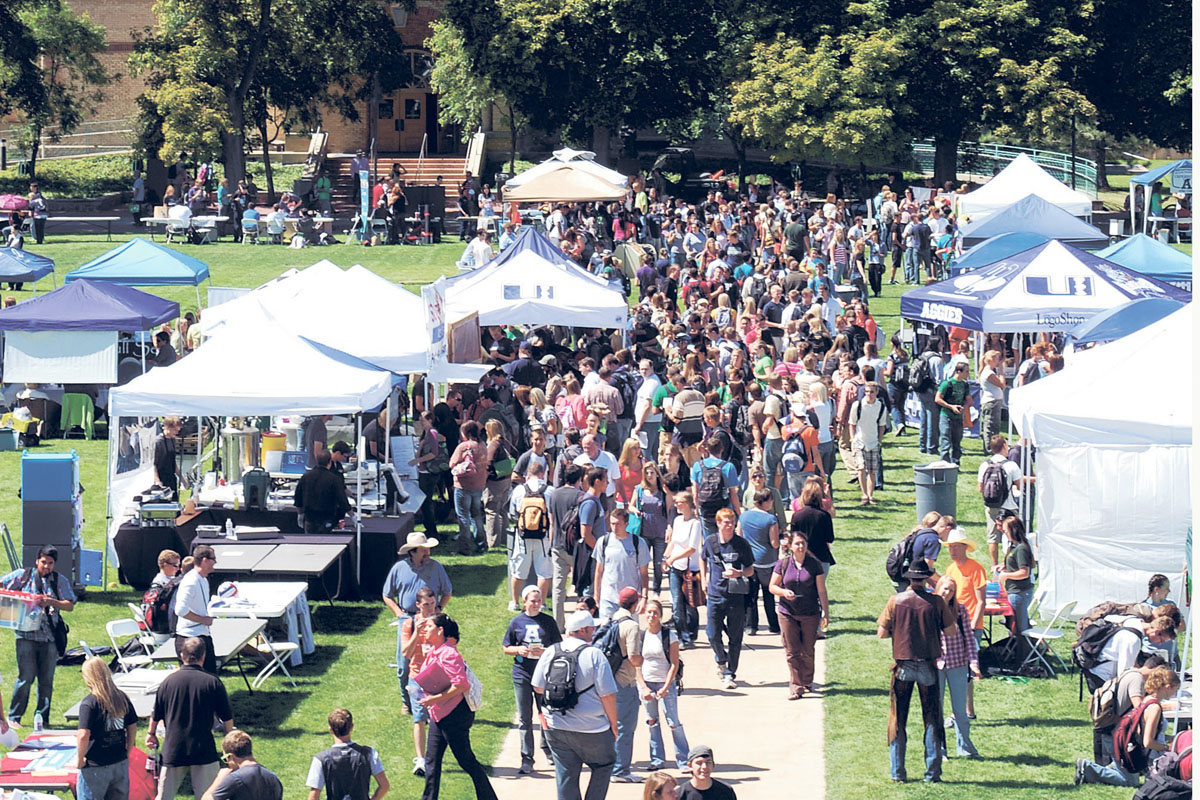Enrollment up for fourth-straight year
The number of students enrolled at Utah State University is the highest yet in its 123-year history, but in the 2012 fiscal year, starting this July, higher education in Utah will receive almost $11 million less than in the 2011 fiscal year.
According to documents provided by the Office of Analysis, Assessment and Accreditation, USU enrollment increased 2.8 percent in the fall 2010 semester compared to the fall of 2009. With the exception of a 2 percent enrollment drop in 2008, fall enrollment has been steadily rising since 2006.
“Growth at the higher education institutions is a challenge everyone in the state is dealing with right now,” said director of admissions Jenn Putnam.
The question being asked now, like at many universities across the U.S., is how the university plans to deal with the paradox of having more students and less money.
“It falls on us to accommodate that growth,” said James Morales, vice president for Student Services. “It is going to mean some changes.”
Morales said although class sizes will have to increase, it will not be as much as some may think. Classes that in the past have had 30 people could increase to 40, and so on, and these will continue to grow. He said that at some point the quality of the courses could be jeopardized.
Balancing a budget involves ups and downs. Morales said he thinks the first thing the university needs to consider is the class sizes and how to keep the quality level where it is at. He said more faculty could be hired to keep class sizes small, but that may involve increasing tuition.
Choices about how many students can be accommodated may need to be made.
“We might need a slightly smaller class than we had in past years,” he said. “We need to sit down with student leaders and discuss what kind of increase is reasonable.”
Putnam said, “We are unsure how soon noticeable changes in admission criteria may be implemented, but we will continue to provide access across the state per our mission as the land-grant institution in Utah.”
The bad economy sends more and more students to universities with hopes of a better chance at getting a job, and the state and federal governments try to meet the needs in their budgets at the same time. This often includes slashing funding, leaving institutions that receive government money scrambling to stay afloat fiscally.
With this increase in students, there were more than 100 more degree-seekers who are transfer students, and almost 40 more were returning students. Michelle Bogdan, Access and Diversity director, said she can see the number of students continuing to increase as people come back to finish degrees.
“With the downturn in the economy, there are people who may have had a loss of employment, spouses are coming back to school, and that is why I see a part of that enrollment increase is non-traditional students,” Bogdan said.
Bogdan said she can see the increase of non-traditional students being especially those with a 3-5 year gap from the last time they attended college.
“It is important there are services and support available to help this population,” Bogdan said.
According to the Utah state legislature’s appropriations summary and budget highlights, published March 10, the funding for higher education from the state is increasing 4.5 percent in order to try to meet the budget gap.
USU is also receiving three one-time grants from the state in the 2012 fiscal year: two million dollars for Animal Sciences, $50,000 for the music department, and $245,800 for the operations and maintenance of the new agriculture building.
– la.stewart@aggiemail.usu.edu
– catherine.meidell@aggiemail.usu.edu

